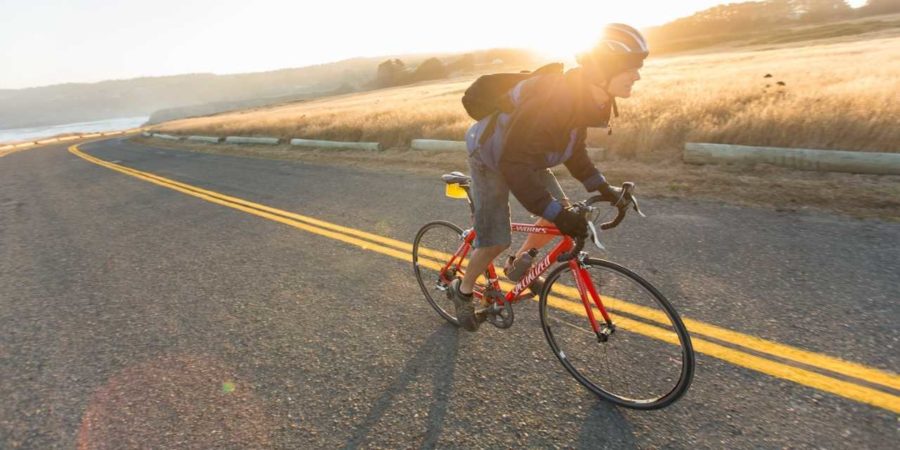Playing musical chairs to park your car every morning at SRJC should not have to be an inevitability. A more fun and healthy method is possible to start your studious day.
Leave your car, take a breath and straddle your bike. I’ve biked for one hour every day for eight months to travel back and forth between my home and the campus. I haven’t experienced any trouble so far. I can say the majority of drivers respect the bike lanes.
The recent Sonoma County Transit Free program for college students is obviously not sufficient to remedy the daily congestion in SRJC parking lots. So, the time has come to reconsider the personal use of cars and witness the benefits of a bicycling lifestyle.
SRJC students Taylor Rock, 20, and Anthony Alexander, 22, ride respectively 4 and 8 miles from their house to the school. Together we agree that you will improve your health, you will save parking and gas money and you will respect the environment. Isn’t the list of reasons long enough?
According to facilities planning and operations Dean Tony Ichsan, a parking project underway is estimated at $475,000.
“This project on the north corner of Mendocino Avenue and Carr Avenue would create an additional much needed forty-two space general parking lot,” Ichsan said.
Proponents of the construction of another parking garage argue they live too far from Santa Rosa to bike. But if more people living in the SRJC area could change their habit by leaving their car at home and riding instead, the half-million dollars could be used for more positive things than appeasing the people who drive a car while they live locally.
Instead of planning the construction of another parking structure, SRJC should focus efforts and budget to promote and to increase the use of bikes among students, faculty and staff.
The 2014 United States Public Interest report New-Course states, “Stanford University estimates it has avoided more than $100 million in parking construction costs over the past decade due to its efforts to discourage driving.”
Actions of the University of Wisconsin-Madison (UW), where a quarter of students bike to campus, could inspire a new program dedicated to the development of bike use. The UW Bicycle resource center provides free use of tools, bicycle repair manuals, maps and organizes monthly events. Their proactive policy increased the percentage of bike users to 50 percent since 2006.
SRJC students Rock and Alexander have riden a bike their “whole lives.” That’s why SRJC governance should use the money to drive an incitement policy for people who are not used to biking.
Rock and Alexander emphasized the bike thefts that often happen on the Santa Rosa campus, SRJC could provide efficient locks. Among several measures, it could also build more racks and help students in need buy a bike. Working in partnership with the Sonoma County Bicycle Coalition, SRJC could easily share documentations and information on riding rules, equipment choices and website resources.
It would be great to see one day the name of SRJC among the universities and colleges like Stanford and Santa Monica College awarded by the League of American Bicyclists.
The city of Santa Rosa has already built a good network of bicycle lanes and trails but Rock thinks, “We should improve the number of bike lanes and make it safer.” Resetting its financial priorities by promoting a strong bike policy, SRJC would encourage the city to do more for bikers. As Rock says, “More people in general should ride bikes whenever they can.”


